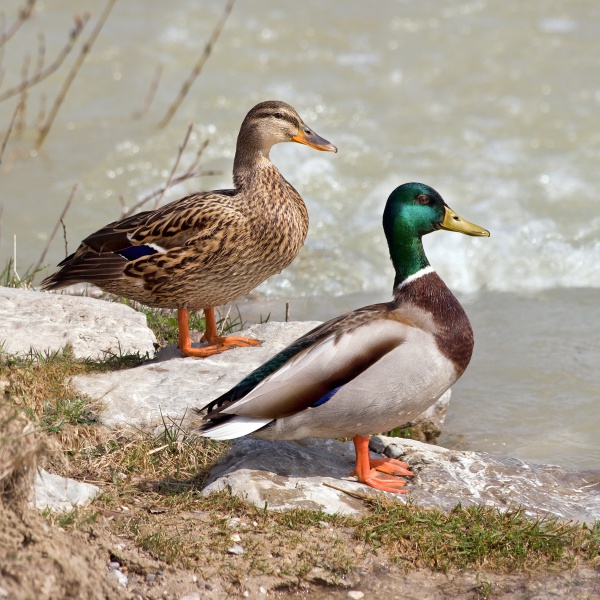Facts About Mallard
The mallard, a species of dabbling duck, is prevalent across temperate and subtropical regions in the Americas, Eurosiberia, and North Africa. They have also been introduced to regions such as New Zealand, Australia, Peru, and South Africa. These ducks belong to the Anatinae subfamily within the waterfowl family, Anatidae.
Male mallards are easily identifiable by their glossy green heads and grey wings, whereas females exhibit brown-speckled plumage. Both sexes feature a distinctive patch of white-bordered black or iridescent blue feathers on their wings. They generally measure between 50-65 cm in length, with males being heavier than most other dabbling ducks.
Mallards flourish in wetlands, feeding on aquatic plants and small organisms. They are social birds, frequently seen in groups or flocks. Fascinatingly, they are the primary ancestors of most domesticated duck breeds. Female mallards typically lay 8 to 13 eggs, which vary in color from creamy white to greenish-buff. They incubate the eggs for about 27-28 days, and it takes 50-60 days for the ducklings to fledge. Remarkably, the ducklings can swim immediately after hatching.
Although classified as a species of least concern by the IUCN, mallards are considered invasive in some regions. They are highly adaptable and can thrive in urban areas, raising concerns about genetic pollution from interbreeding with indigenous wild duck species. In 2013, the mallard's genome was sequenced, providing deeper insights into this versatile bird.
Mallards have an omnivorous diet, consuming a variety of foods from gastropods and invertebrates to seeds and plant matter. Known for their unique mating behaviors, they can be quite aggressive during the breeding season. They also have the ability to hybridize with various duck species, posing a threat to local waterfowl populations.
These ducks inhabit a wide range of environments, from the Arctic tundra to subtropical regions, and can live in both freshwater and saltwater wetlands, estuaries, and even coastal seas. Mallards have interacted with humans for centuries, serving as the ancestors of most domestic duck breeds. They are hunted for sport, and their meat has been part of human diets since ancient times.
Despite their commonality and adaptability, mallards present conservation challenges due to their propensity to hybridize with native waterfowl. This can result in genetic pollution and loss of biodiversity. In areas where they have been introduced, mallards can outcompete local species, necessitating ongoing efforts to manage their populations and mitigate their impact on ecosystems.

 Montenegro
Montenegro